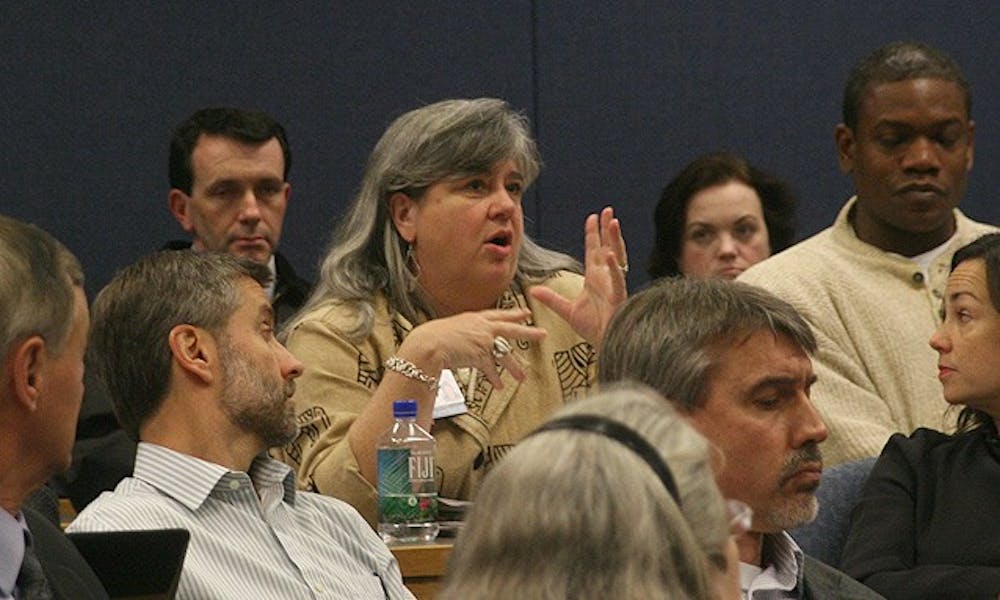The completion of “Phase One” of Duke’s new campus in Kunshan, China will require an estimated investment of $11 million, the Academic Council learned Thursday.
An initial investment of $5.5 million is needed for design, consulting and construction oversight, said Greg Jones, vice president and vice provost of global strategy and programs. He predicts that Duke will need to contribute an additional $5.5 million over the first five years of the campus’s operation to maintain academic programs and campus operations. The construction is expected to be completed by summer 2012, with classes beginning that Fall.
“That number may go down if we’re as successful at raising money as we think we will be in China,” Jones said.
Jones’ team is close to finalizing an agreement with a foundation in China that will provide significant financial resources for the project as well as several wealthy Chinese individuals who have pledged to provide financial support.
While the Kunshan municipal government is paying for the 200-acre campus and its facilities, Jones will request the additional funding in part for construction oversight that he says will ensure that “Duke standards” are maintained during construction.
Jones will present a firmer estimate of the operational budget—the second $5.5 million—to the Council in February.
“It’s a moderate investment in comparison to the impact we will have in establishing a global presence,” he said.
Jones also spoke to the Council about Duke-Kunshan’s entity sponsors and academic partners.
In January, Duke formalized a partnership with Shanghai Jiao Tong University. But issues emerged this summer when SJTU revealed that though it was willing to be an academic partner, it would not sponsor Duke-Kunshan’s appeal to the Chinese Ministry of Education for project approval. Still, Jones said the educational ministers are eager to receive Duke’s proposal and will expedite the approval process as soon as the campus finds a sponsor.
Jones’ team is currently seeking a “silent sponsor” that will “establish Duke’s name most prominently,” he added.
Following the discussion of the Kunshan budget, members of the Academic Council presented analyses of the relationship between Duke’s academic and athletic endeavours.
Charles Clotfeter, the Z. Smith Reynolds professor of public policy, called on the Duke administration to acknowledge the reality of “big-time sports.”
When he compared eight highly selective universities—four who, like Duke, have substantial athletic programs and four who do not—he found that “students in universities with big-time sports spend less time in class and less time studying... they spend more time in outside activities and are more likely to engage in binge drinking.”
Clotfeter also cited, however, the happiness associated with an emotional investment in a sports team as a substantial benefit of a successful athletic program.
Richard Hain, a professor and chair of the mathematics department, identified areas where the athletic budget could potentially be cut as the University tries to close its deficit.
He specifically referenced athletic subsidies and the anticipated renovation of Wallace Wade Stadium as examples of excessive athletic spending.
“The Physics Building is in very poor physical condition,” Hain said, noting that academic needs have been ignored.
“There is a U.S. college athletics bubble,” he added. “What will be the consequences for Duke when it inevitably bursts?”
Get The Chronicle straight to your inbox
Sign up for our weekly newsletter. Cancel at any time.

